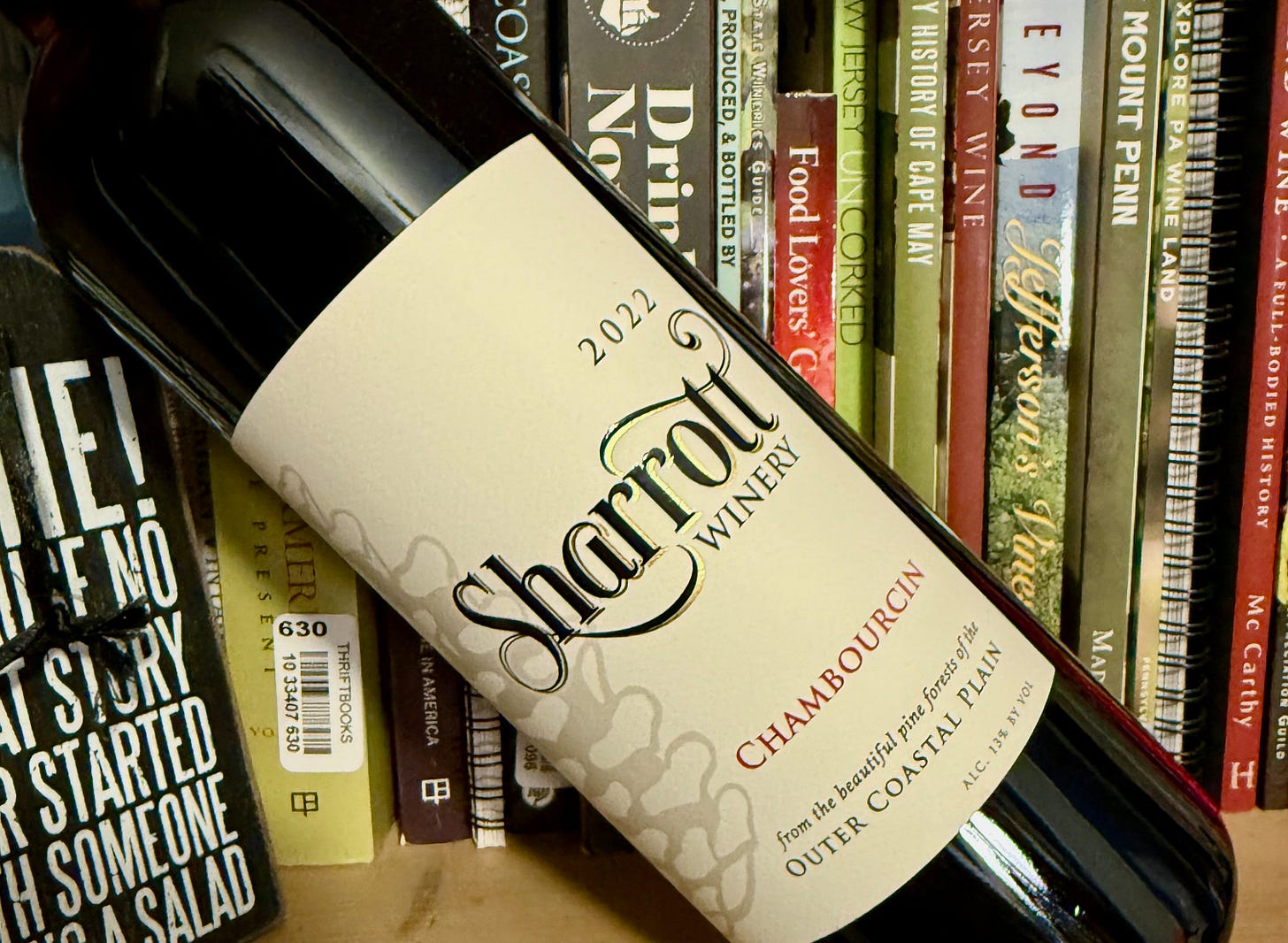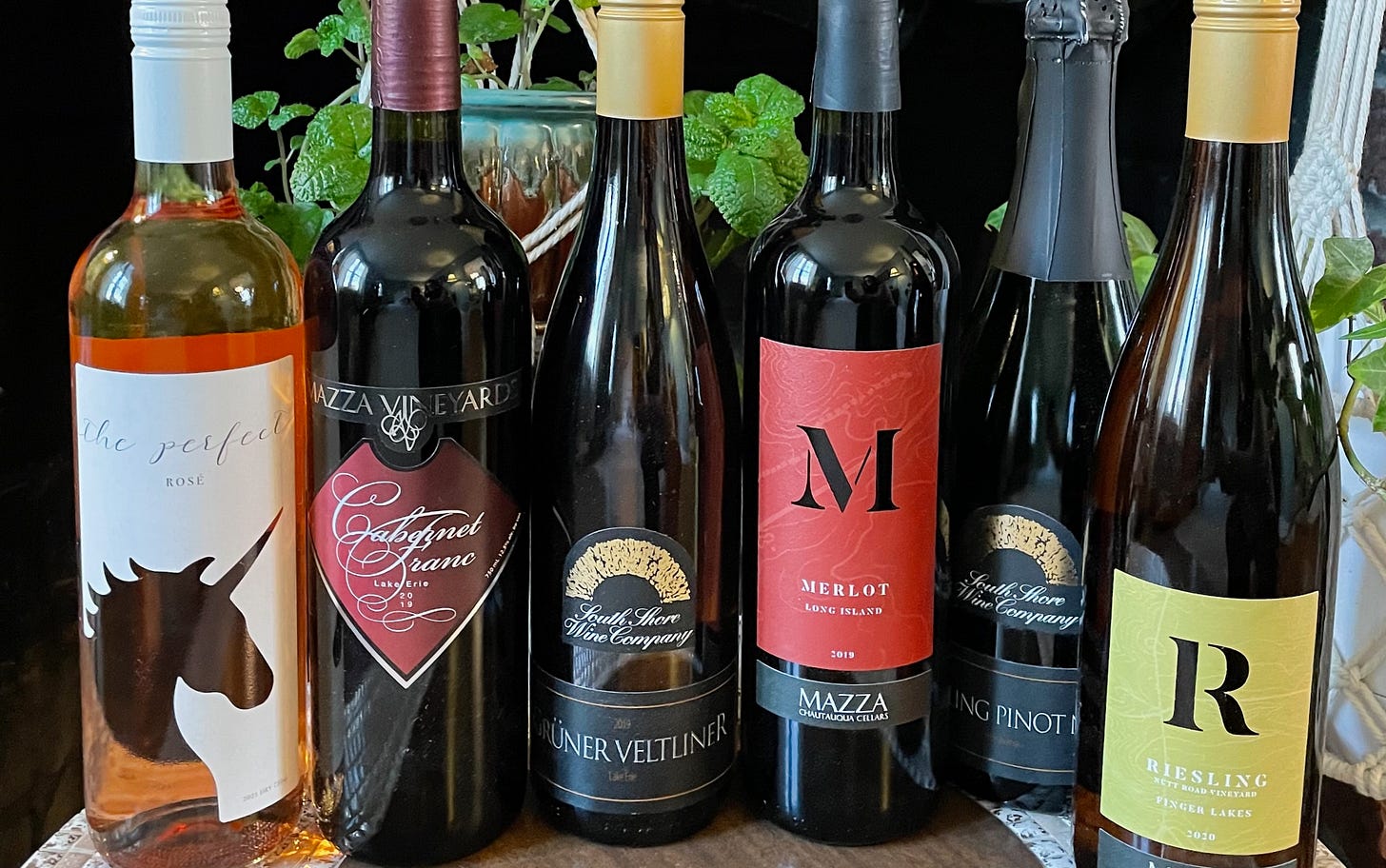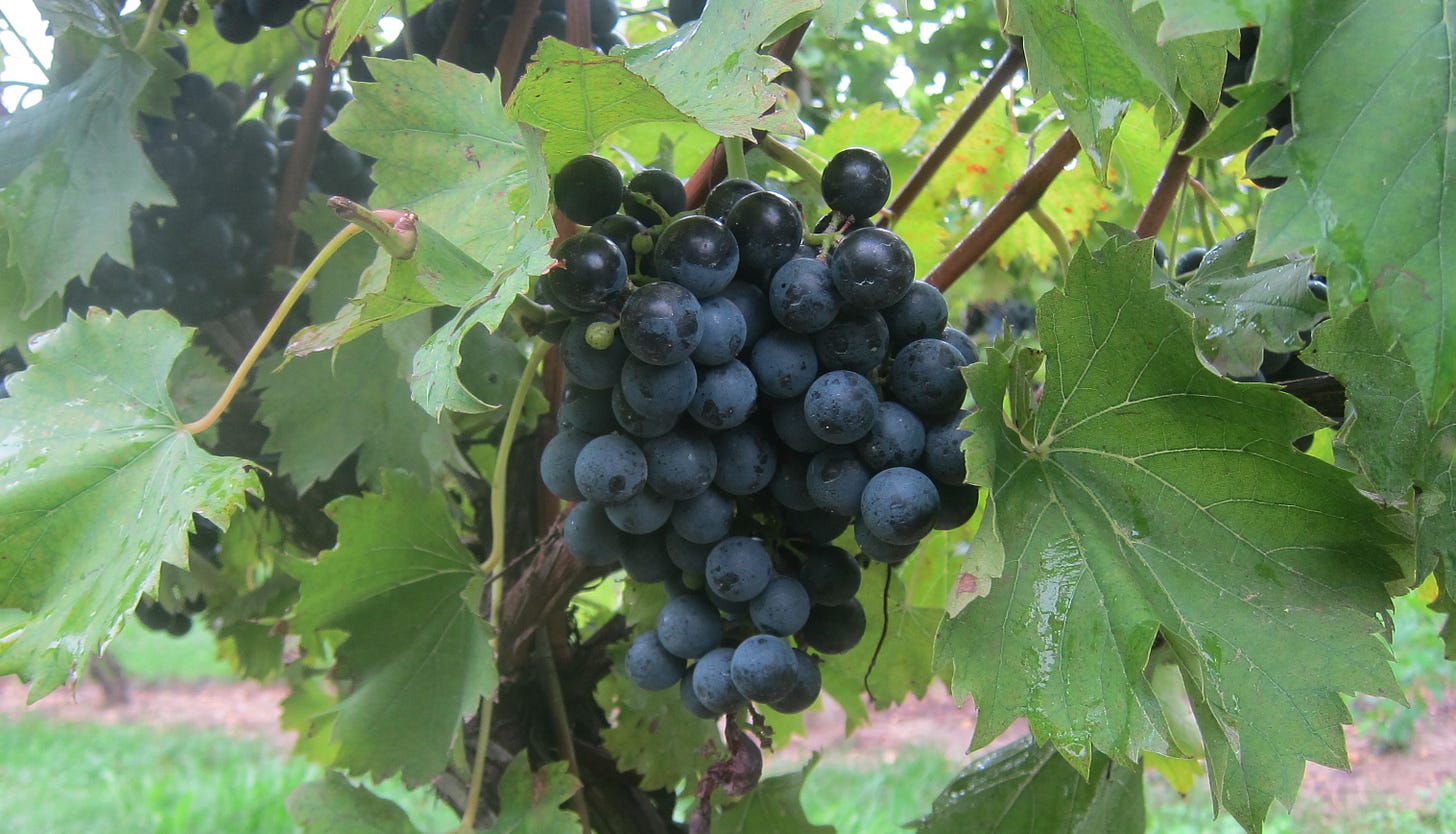
There’s a Bordeaux blend-inspired wine produced in New Jersey’s Outer Coastal Plain called Coeur d’Est. Translated, it means Heart of the East, and its name pays homage to its French inspiration while also referencing New Jersey’s position on the East Coast of the U.S.
The permitted grapes in the wine are Cabernet Franc, Merlot, Cabernet Sauvignon, Syrah, Petit Verdot, and Chambourcin. The only grape that MUST be in the blend is Chambourcin, and it must make up 25% to 50% of the wine. That is how important Chambourcin is to the region.
The grape is a French-American hybrid, with parentage that’s a bit murky. There’s some literature that says it’s a cross between Joannes Seyve 11369 and Plantet, but I haven’t taken a hard enough look to see if that’s accurate.
What I do know is that it’s thick skinned and fairly resistent to disease pressure and extreme climate events. Traditionally in the U.S., it’s been used to add rich color to a red blend. But, as I learned when I did a deep dive into Chambourcin in Pennsylvania’s Lehigh Valley AVA for Edible Philly, the grape is a chameleon. It can be used to produce dry or sweet reds, blends, bubblies, rosés, and Port-style wines. In the Lehigh Valley, it’s known as the Jewel of the Valley because so many of its wineries understand its worth. East Coast wineries from New York to North Carolina as well as wineries in the mid-West rely on the grape to always produce well, even in difficult growing seasons.
The Wine World is Softening
It’s no secret that hybrids have had a less than stellar reputation over the decades, and there may reasons for that. But, as winemakers have learned through trial and error how to treat Chambourcin (as well as other hybrids), some darn good wines have emerged, and the wine world is taking note.
“Of all the hybrids and crosses between vinifera and other grape varieties, Chambourcin may be the grape that comes closest to Vitis vinifera for winemaking and to hybrids for disease resistance,” a recent Wine Enthusiast piece by Jeff Siegel noted.

In the 2024 Decanter World Wine Awards, Mazza Vineyard’s 2022 The Perfect Rosé earned gold and 95 points, one of only 20 U.S. wines to earn gold in the competition. The grape in that rosé? Chambourcin. It is a fantastic wine that comes from grapes grown in the Lake Erie AVA of Pennsylvania.
SevenFifty Daily has recommended a Chabourcin from Missouri, VinePair has shown the grape respect, and the annual Pennsylvania Sommelier Judgment has added Chambourcin (along with Vidal Blanc) as a wine that can be entered into the previous vinifera-only competition. (Disclosure: I am a regular judge at the event.)
And, if my opinion means anything, I consider Chambourcin a grape worthy of being a single varietal wine, whether it’s red or rosé, and I seek it out when visiting local wineries. The Sharrott Winery Chambourcin pictured at the top of the page is aged in oak, food friendly, spicy, full of dark fruits, and a perfect example of the grape treated with the same respect as its vinifera siblings. I’ve had my fill of Mazza’s The Perfect Rosé, and it deserves the accolades awarded by Decanter.
There’s a whole other discussion to be had on the importance of hybrid grapes in the face of climate change, but for now, I just want to sing the praises of Chambourcin as a grape, regardless of its provenance.
I want to know your thoughts on Chambourcin in the comments, and if you have a favorite bottle or two, tell me.





There was a lot of terrible Chambo out there for a long time, and there still is IMO. But yes it has seemingly turned a corner in recent years and is now more consistently making good wines, esp. in the hands of quality producers. Galen Glen of course is great, as is 1723.
Robin - Check out Lauren Zimmerman's Chambourcins at Port of Leonardtown winery in MD. Also Mike Fiore in MD ferments his Chambourcin on cabernet skins (I believe) for extra heft.